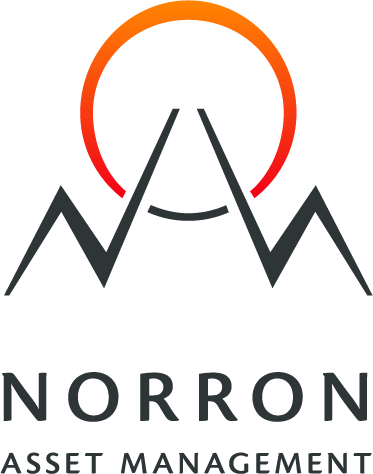Integration of sustainability risks in the investment process
A sustainability risk involves an environmental, social or governance-related event or condition that, if it occurs, could cause an actual or potential material negative impact on the value of the investment. Sustainability risks thus constitute a financial risk that can affect the value of investments over time. Norron is a Nordic UCITS fund manager, which means that the funds have a relatively broad investment mandate that extends across several sectors, regions and financial instruments. The specific sustainability risks can thus vary between different investments and depend on the financial instrument in question. In general, however, the analysis often includes risks related to ownership and management structure as well as corporate governance, climate and environment, personnel issues, respect for human rights and work to combat corruption and bribery.
The consideration of sustainability risks is part of the broader analysis and risk monitoring that potential and current investments undergo. Since sustainability risks can vary during the investment period, sustainability risks are an integral part throughout the investment process. The investment process consists mainly of the following areas:
1. Investement universe
2. Analysis and investment decision
3. Active ownership
1. Integration of Sustainability Risks in the Investment Universe
Norron’s investment universe is determined on the basis of factors such as geographical area, type of financial instrument, sectors and any further restrictions in each fund’s investment mandate. These are stated in the advance information for each fund. In addition, the funds’ investment universe is determined by excluding special sectors where Norron considers that the sustainability risks are inherently unjustifiably high. In this step, it is thus not the specific sustainability risks that an individual investment is associated with that are assessed, but the specific sustainability risks of the specific sector. More information about which exclusion criteria are applied to Norron’s funds can be found on our website under the tab Exclusion criteria.
2. Integration of Sustainability Risks in the Company Analysis for Investment Decisions
Before Norron’s management team take an investment decision, the investment object undergoes a thorough analysis. The analysis consists of a fundamental and quantum-based analysis, a subjective assessment of the investment’s potential for generating a financial return, the characteristics of the financial instrument and the sustainability risks to which the company or financial instrument are associated. All these factors are essential to optimize the risk-adjusted return for each fund in a methodical approach. Norron uses both internally and externally developed analysis as a basis for the analysis. The internal analysis consists of Norron’s own assessments of an investment’s financial and sustainability-related conditions. The external analysis in turn consists mainly of company and external analysis from third parties as well as sustainability data from, among others, MSCI.
The sustainability risks that an investment is associated with vary in both nature and scope and must therefore be assessed with regard to the specific properties and activities of the investment. Factors that can affect an investment’s sustainability risks could be sector affiliation, region, distribution chains, ownership structure and corporate governance. Both gross and net risks for the investment are assessed and evaluated, ie which sustainability risks a company is exposed to, for example, and how these are managed and possibly minimized by the company. The analysis also takes into account the investment’s principle adverse impact on sustainability factors, how far a company has come in its sustainability work and the opportunities for the company to be able to reduce its sustainability risks, including climate footprint. If Norron deems that the company’s financial prospects are not sufficient or that the sustainability risks in the company are too high – together with the fact that there is no plan for how the company will manage these risks – an investment in the company won’t take place.
3. Integration of Sustainability Risks Through Active Ownership
Norron believes that it is through an active management philosophy that we can generate the greatest possible sustainable and economic value creation for fund unit holders. The active management philosophy is divided into three main areas for active ownership; (i) interaction, (ii) structure and process and (iii) ongoing analysis.
3.1 Interaction
As an investor, Norron works together with the portfolio companies and follows a friendly ownership and tranformation strategy where there is a continuous dialogue with the companies in which we invest. As such, we can influence and follow up on the portfolio companies’ work with sustainability risks so that it meets Norron’s requirements and expectations. The interaction takes place through meetings with company representatives, conferences and workshops, meetings with third-party analysts, case studies and voting at general meetings on important issues. Norron’s staff also participate in various meetings to increase their knowledge and understanding of the portfolio companies’ sustainability work.
3.2 Structure and processes
Norron has established a process in order to work with the portfolio companies in a structured way. This includes, among other things, gathering of company information, documenting company interaction, screening the funds against sustainability factors, managing incidents in portfolio companies and developing the internal sustainability analysis. All sustainability data we have about companies is gathered in an ESG database. In this way, we can follow up on the companies’ sustainability work in a clear and efficient manner and monitor the sustainability risks in the funds.
3.3 Ongoing analysis
In addition to pre-investment analysis, companies that Norron invests in are also analyzed during the investment period, from both a financial and a sustainability perspective. The analysis is based on the information we collect on an ongoing basis about the companies as well as external data analysis. The ongoing analysis takes into account both sustainability risks in the individual portfolio companies and on an overall fund level. The analysis then forms the basis for whether an investment should continue or a divestment should take place, and how we can influence portfolio companies in their work.




 For swiss investors press here
For swiss investors press here